New fissures open in Hawaii
- begin quote from:
Volcanologist: Why Hawaii's volcano is in danger of going ballistic
By Einat LevUpdated 1:02 PM ET, Thu May 10, 2018Einat Lev, a volcanologist, is an assistant research professor at the Lamont-Doherty Earth Observatory at Columbia University. Her research, funded by the National Science Foundation, is focused on lava flow dynamics at different volcanoes, including in Hawaii. The opinions expressed in this commentary are solely those of the author.
(CNN)Everyone has been looking at Kilauea volcano's lava flows. Sure, a wall of molten rock consuming a car is quite the sight. But as we all focus on the damage at Leilani Estates, we shouldn't forget that volcanoes are complex systems, where everything is connected. New warnings about flying ballistic blocks and sinking lava lakes help us remember!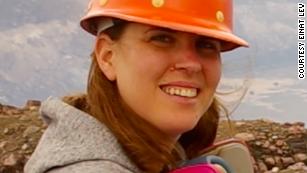 Einat LevThis event -- beautiful, destructive, frightening -- also presents a moment for all of us to appreciate the immense power of the forces that never cease shaping our planet. We are reminded by Kilauea to stay humble in the face of nature. And for volcanologists, the eruption is an opportunity to share with the public what we know about how these massive, intricate systems work.Indeed, as lava is spitting and oozing along Kilauea's East Rift Zone, there is action miles away at the top of the volcano. The pressure dropped below the lava lake at Kilauea's summit crater, Halema'umau', and lake levels have reached the lowest level since it formed back in 2008.Scientists at the US Geological Survey's Hawaii Volcano Observatory worry that if the lava lake drops too far, groundwater will seep into the conduit -- the plumbing in this vast, interconnected system -- between the summit and the East Rift Zone.
Einat LevThis event -- beautiful, destructive, frightening -- also presents a moment for all of us to appreciate the immense power of the forces that never cease shaping our planet. We are reminded by Kilauea to stay humble in the face of nature. And for volcanologists, the eruption is an opportunity to share with the public what we know about how these massive, intricate systems work.Indeed, as lava is spitting and oozing along Kilauea's East Rift Zone, there is action miles away at the top of the volcano. The pressure dropped below the lava lake at Kilauea's summit crater, Halema'umau', and lake levels have reached the lowest level since it formed back in 2008.Scientists at the US Geological Survey's Hawaii Volcano Observatory worry that if the lava lake drops too far, groundwater will seep into the conduit -- the plumbing in this vast, interconnected system -- between the summit and the East Rift Zone. Photos: Recently active volcanoesThe Calbuco volcano erupts near Puerto Varas, Chile, in April 2015.Hide Caption13 of 25
Photos: Recently active volcanoesThe Calbuco volcano erupts near Puerto Varas, Chile, in April 2015.Hide Caption13 of 25 Photos: Recently active volcanoesSmoke rises from the Turrialba volcano in Turrialba, Costa Rica, in March 2015. Eruptions of ash and stones prompted authorities to evacuate residential areas.Hide Caption14 of 25
Photos: Recently active volcanoesSmoke rises from the Turrialba volcano in Turrialba, Costa Rica, in March 2015. Eruptions of ash and stones prompted authorities to evacuate residential areas.Hide Caption14 of 25 Photos: Recently active volcanoesThe Fuego volcano spews a cloud of ash west of Guatemala City, Guatemala, in March 2015.Hide Caption15 of 25
Photos: Recently active volcanoesThe Fuego volcano spews a cloud of ash west of Guatemala City, Guatemala, in March 2015.Hide Caption15 of 25 Photos: Recently active volcanoesVillarrica, a Chilean volcano, began erupting in March 2015. The volcano is one of Chile's most active.Hide Caption16 of 25
Photos: Recently active volcanoesVillarrica, a Chilean volcano, began erupting in March 2015. The volcano is one of Chile's most active.Hide Caption16 of 25 Photos: Recently active volcanoesLava flows from the Kilauea volcano in Pahoa, Hawaii, in October 2014. The flow picked up speed, prompting emergency officials to close part of the main road through town and tell residents to be prepared to evacuate.Hide Caption17 of 25
Photos: Recently active volcanoesLava flows from the Kilauea volcano in Pahoa, Hawaii, in October 2014. The flow picked up speed, prompting emergency officials to close part of the main road through town and tell residents to be prepared to evacuate.Hide Caption17 of 25 Photos: Recently active volcanoesJapan's Mount Sakurajima erupts in September 2014. It was the second volcano in two days to erupt in Japan.Hide Caption18 of 25
Photos: Recently active volcanoesJapan's Mount Sakurajima erupts in September 2014. It was the second volcano in two days to erupt in Japan.Hide Caption18 of 25 Photos: Recently active volcanoesDense white plumes rise high in the air as Mount Ontake erupts in central Japan in September 2014.Hide Caption19 of 25
Photos: Recently active volcanoesDense white plumes rise high in the air as Mount Ontake erupts in central Japan in September 2014.Hide Caption19 of 25 Photos: Recently active volcanoesMount Slamet spews lava and gas during an eruption in Brebes, Indonesia, in September 2014.Hide Caption20 of 25
Photos: Recently active volcanoesMount Slamet spews lava and gas during an eruption in Brebes, Indonesia, in September 2014.Hide Caption20 of 25 Photos: Recently active volcanoesFountains of lava spurt from a fissure in the ground on the north side of the Bardarbunga volcano in Iceland in September 2014.Hide Caption21 of 25
Photos: Recently active volcanoesFountains of lava spurt from a fissure in the ground on the north side of the Bardarbunga volcano in Iceland in September 2014.Hide Caption21 of 25 Photos: Recently active volcanoesMount Tavurvur erupts in Papua New Guinea in August 2014, forcing local communities to evacuate.Hide Caption22 of 25
Photos: Recently active volcanoesMount Tavurvur erupts in Papua New Guinea in August 2014, forcing local communities to evacuate.Hide Caption22 of 25 Photos: Recently active volcanoesThe Karymsky volcano erupts in Kamchatka, Russia, in January 2013.Hide Caption23 of 25
Photos: Recently active volcanoesThe Karymsky volcano erupts in Kamchatka, Russia, in January 2013.Hide Caption23 of 25 Photos: Recently active volcanoesThe Copahue volcano emits smoke and ash above Caviahue, in Argentina's Neuquen province, in December 2012.Hide Caption24 of 25
Photos: Recently active volcanoesThe Copahue volcano emits smoke and ash above Caviahue, in Argentina's Neuquen province, in December 2012.Hide Caption24 of 25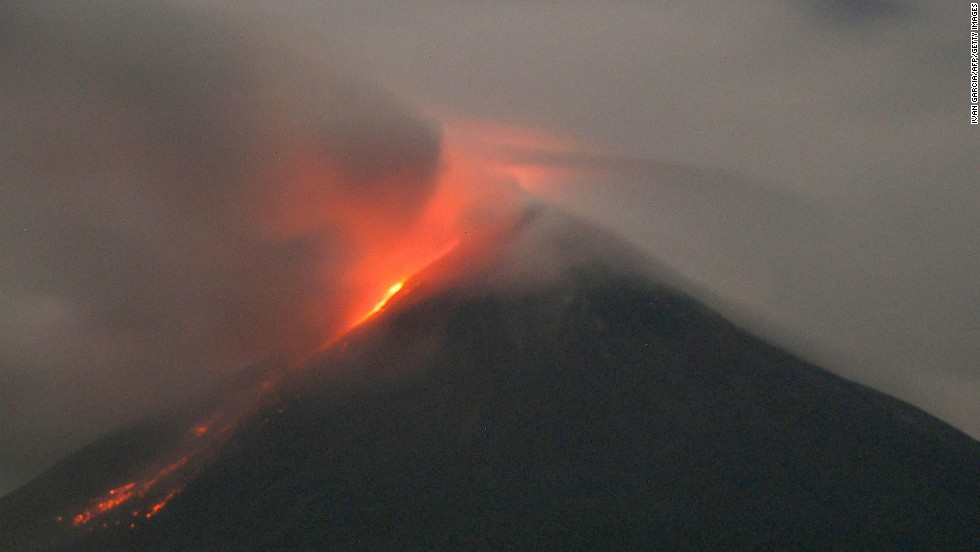 Photos: Recently active volcanoesWestern Mexico's Colima volcano emits lava in October 2004. The Global Volcanism Program reported "a bright thermal anomaly" as well as gas emission in November 2013.Hide Caption25 of 25
Photos: Recently active volcanoesWestern Mexico's Colima volcano emits lava in October 2004. The Global Volcanism Program reported "a bright thermal anomaly" as well as gas emission in November 2013.Hide Caption25 of 25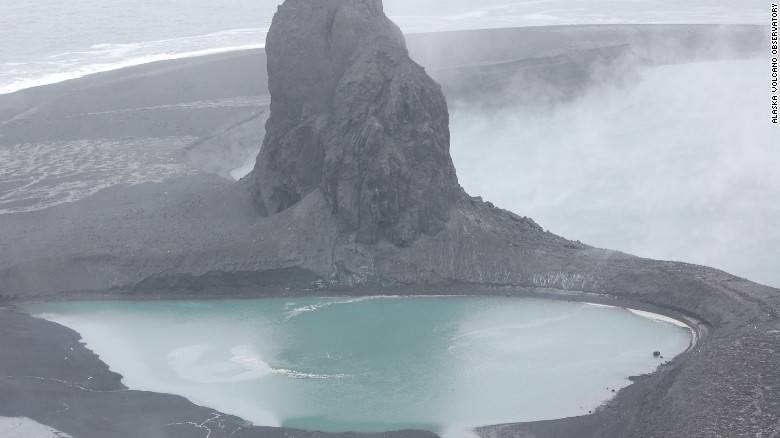 Photos: Recently active volcanoesThis May 8 file photo of the Bogoslof volcano in Alaska's Aleutian islands shows a crater now filled by a warm saltwater lake. The volcano erupted on Bogoslof Island on Sunday, May 28, producing an ash cloud that reached up to 45,000 feet, according to the Alaska Volcano Observatory.Hide Caption1 of 25
Photos: Recently active volcanoesThis May 8 file photo of the Bogoslof volcano in Alaska's Aleutian islands shows a crater now filled by a warm saltwater lake. The volcano erupted on Bogoslof Island on Sunday, May 28, producing an ash cloud that reached up to 45,000 feet, according to the Alaska Volcano Observatory.Hide Caption1 of 25 Photos: Recently active volcanoesVillagers look on as Mount Sinabung volcano spews thick volcanic ash in Karo, Indonesia, on Friday, May 19.Hide Caption2 of 25
Photos: Recently active volcanoesVillagers look on as Mount Sinabung volcano spews thick volcanic ash in Karo, Indonesia, on Friday, May 19.Hide Caption2 of 25 Photos: Recently active volcanoesThe Turrialba volcano spews smoke and ash in May 2016 in Cartago, Costa Rica. Experts say it is the strongest eruption from the volcano in the past six years.Hide Caption3 of 25
Photos: Recently active volcanoesThe Turrialba volcano spews smoke and ash in May 2016 in Cartago, Costa Rica. Experts say it is the strongest eruption from the volcano in the past six years.Hide Caption3 of 25 Photos: Recently active volcanoesThe Pavlof volcano erupts on Alaska's remote Aleutian Island archipelago in March 2016.Hide Caption4 of 25
Photos: Recently active volcanoesThe Pavlof volcano erupts on Alaska's remote Aleutian Island archipelago in March 2016.Hide Caption4 of 25 Photos: Recently active volcanoesThe Ecuadorian volcano Tungurahua spews lava and ash in Cahuaji, about 80 miles south of Quito, in February 2016. Authorities raised the alert level from yellow to orange after the volcano increased its activity and projected a column of ash 3 miles high.Hide Caption5 of 25
Photos: Recently active volcanoesThe Ecuadorian volcano Tungurahua spews lava and ash in Cahuaji, about 80 miles south of Quito, in February 2016. Authorities raised the alert level from yellow to orange after the volcano increased its activity and projected a column of ash 3 miles high.Hide Caption5 of 25 Photos: Recently active volcanoesThe Soputan volcano spews lava and ash during an eruption on Indonesia's Sulawesi island in January 2016.Hide Caption6 of 25
Photos: Recently active volcanoesThe Soputan volcano spews lava and ash during an eruption on Indonesia's Sulawesi island in January 2016.Hide Caption6 of 25 Photos: Recently active volcanoesThe Momotombo volcano erupts just before daybreak in Leon, Nicaragua, on December 4, 2015. The volcano had been quiet for many years.Hide Caption7 of 25
Photos: Recently active volcanoesThe Momotombo volcano erupts just before daybreak in Leon, Nicaragua, on December 4, 2015. The volcano had been quiet for many years.Hide Caption7 of 25 Photos: Recently active volcanoesSmoke rises over the Italian city of Taormina during an eruption of Mount Etna, one of the most active volcanoes in the world, in December 2015.Hide Caption8 of 25
Photos: Recently active volcanoesSmoke rises over the Italian city of Taormina during an eruption of Mount Etna, one of the most active volcanoes in the world, in December 2015.Hide Caption8 of 25 Photos: Recently active volcanoesCotopaxi, a volcano in Ecuador, sends large gray puffs of ash into the sky on August 14, 2015. Officialsdeclared a yellow alert, the lowest level.Hide Caption9 of 25
Photos: Recently active volcanoesCotopaxi, a volcano in Ecuador, sends large gray puffs of ash into the sky on August 14, 2015. Officialsdeclared a yellow alert, the lowest level.Hide Caption9 of 25 Photos: Recently active volcanoesThick ash, rock fragments and volcanic gases pour from Mount Sinabung in Indonesia. The government's natural disaster management agency raised the alert level on June 5, 2015.Hide Caption10 of 25
Photos: Recently active volcanoesThick ash, rock fragments and volcanic gases pour from Mount Sinabung in Indonesia. The government's natural disaster management agency raised the alert level on June 5, 2015.Hide Caption10 of 25 Photos: Recently active volcanoesMount Shindake spews ash on Kuchinoerabu Island in Yakushima, Japan, in May 2015. The volcano erupted shortly before 10 a.m. local time, the Japan Meteorological Agency said.Hide Caption11 of 25
Photos: Recently active volcanoesMount Shindake spews ash on Kuchinoerabu Island in Yakushima, Japan, in May 2015. The volcano erupted shortly before 10 a.m. local time, the Japan Meteorological Agency said.Hide Caption11 of 25 Photos: Recently active volcanoesThe Wolf volcano at Isabela Island -- the largest of the Galapagos Islands west of mainland Ecuador -- erupts May 25, 2015 for the first time in 33 years.Hide Caption12 of 25
Photos: Recently active volcanoesThe Wolf volcano at Isabela Island -- the largest of the Galapagos Islands west of mainland Ecuador -- erupts May 25, 2015 for the first time in 33 years.Hide Caption12 of 25 Photos: Recently active volcanoesThe Calbuco volcano erupts near Puerto Varas, Chile, in April 2015.Hide Caption13 of 25
Photos: Recently active volcanoesThe Calbuco volcano erupts near Puerto Varas, Chile, in April 2015.Hide Caption13 of 25 Photos: Recently active volcanoesSmoke rises from the Turrialba volcano in Turrialba, Costa Rica, in March 2015. Eruptions of ash and stones prompted authorities to evacuate residential areas.Hide Caption14 of 25
Photos: Recently active volcanoesSmoke rises from the Turrialba volcano in Turrialba, Costa Rica, in March 2015. Eruptions of ash and stones prompted authorities to evacuate residential areas.Hide Caption14 of 25 Photos: Recently active volcanoesThe Fuego volcano spews a cloud of ash west of Guatemala City, Guatemala, in March 2015.Hide Caption15 of 25
Photos: Recently active volcanoesThe Fuego volcano spews a cloud of ash west of Guatemala City, Guatemala, in March 2015.Hide Caption15 of 25 Photos: Recently active volcanoesVillarrica, a Chilean volcano, began erupting in March 2015. The volcano is one of Chile's most active.Hide Caption16 of 25
Photos: Recently active volcanoesVillarrica, a Chilean volcano, began erupting in March 2015. The volcano is one of Chile's most active.Hide Caption16 of 25 Photos: Recently active volcanoesLava flows from the Kilauea volcano in Pahoa, Hawaii, in October 2014. The flow picked up speed, prompting emergency officials to close part of the main road through town and tell residents to be prepared to evacuate.Hide Caption17 of 25
Photos: Recently active volcanoesLava flows from the Kilauea volcano in Pahoa, Hawaii, in October 2014. The flow picked up speed, prompting emergency officials to close part of the main road through town and tell residents to be prepared to evacuate.Hide Caption17 of 25 Photos: Recently active volcanoesJapan's Mount Sakurajima erupts in September 2014. It was the second volcano in two days to erupt in Japan.Hide Caption18 of 25
Photos: Recently active volcanoesJapan's Mount Sakurajima erupts in September 2014. It was the second volcano in two days to erupt in Japan.Hide Caption18 of 25 Photos: Recently active volcanoesDense white plumes rise high in the air as Mount Ontake erupts in central Japan in September 2014.Hide Caption19 of 25
Photos: Recently active volcanoesDense white plumes rise high in the air as Mount Ontake erupts in central Japan in September 2014.Hide Caption19 of 25 Photos: Recently active volcanoesMount Slamet spews lava and gas during an eruption in Brebes, Indonesia, in September 2014.Hide Caption20 of 25
Photos: Recently active volcanoesMount Slamet spews lava and gas during an eruption in Brebes, Indonesia, in September 2014.Hide Caption20 of 25 Photos: Recently active volcanoesFountains of lava spurt from a fissure in the ground on the north side of the Bardarbunga volcano in Iceland in September 2014.Hide Caption21 of 25
Photos: Recently active volcanoesFountains of lava spurt from a fissure in the ground on the north side of the Bardarbunga volcano in Iceland in September 2014.Hide Caption21 of 25 Photos: Recently active volcanoesMount Tavurvur erupts in Papua New Guinea in August 2014, forcing local communities to evacuate.Hide Caption22 of 25
Photos: Recently active volcanoesMount Tavurvur erupts in Papua New Guinea in August 2014, forcing local communities to evacuate.Hide Caption22 of 25 Photos: Recently active volcanoesThe Karymsky volcano erupts in Kamchatka, Russia, in January 2013.Hide Caption23 of 25
Photos: Recently active volcanoesThe Karymsky volcano erupts in Kamchatka, Russia, in January 2013.Hide Caption23 of 25 Photos: Recently active volcanoesThe Copahue volcano emits smoke and ash above Caviahue, in Argentina's Neuquen province, in December 2012.Hide Caption24 of 25
Photos: Recently active volcanoesThe Copahue volcano emits smoke and ash above Caviahue, in Argentina's Neuquen province, in December 2012.Hide Caption24 of 25 Photos: Recently active volcanoesWestern Mexico's Colima volcano emits lava in October 2004. The Global Volcanism Program reported "a bright thermal anomaly" as well as gas emission in November 2013.Hide Caption25 of 25
Photos: Recently active volcanoesWestern Mexico's Colima volcano emits lava in October 2004. The Global Volcanism Program reported "a bright thermal anomaly" as well as gas emission in November 2013.Hide Caption25 of 25 Photos: Recently active volcanoesThis May 8 file photo of the Bogoslof volcano in Alaska's Aleutian islands shows a crater now filled by a warm saltwater lake. The volcano erupted on Bogoslof Island on Sunday, May 28, producing an ash cloud that reached up to 45,000 feet, according to the Alaska Volcano Observatory.Hide Caption1 of 25
Photos: Recently active volcanoesThis May 8 file photo of the Bogoslof volcano in Alaska's Aleutian islands shows a crater now filled by a warm saltwater lake. The volcano erupted on Bogoslof Island on Sunday, May 28, producing an ash cloud that reached up to 45,000 feet, according to the Alaska Volcano Observatory.Hide Caption1 of 25 Photos: Recently active volcanoesVillagers look on as Mount Sinabung volcano spews thick volcanic ash in Karo, Indonesia, on Friday, May 19.Hide Caption2 of 25
Photos: Recently active volcanoesVillagers look on as Mount Sinabung volcano spews thick volcanic ash in Karo, Indonesia, on Friday, May 19.Hide Caption2 of 25 Photos: Recently active volcanoesThe Turrialba volcano spews smoke and ash in May 2016 in Cartago, Costa Rica. Experts say it is the strongest eruption from the volcano in the past six years.Hide Caption3 of 25
Photos: Recently active volcanoesThe Turrialba volcano spews smoke and ash in May 2016 in Cartago, Costa Rica. Experts say it is the strongest eruption from the volcano in the past six years.Hide Caption3 of 25 Photos: Recently active volcanoesThe Pavlof volcano erupts on Alaska's remote Aleutian Island archipelago in March 2016.Hide Caption4 of 25
Photos: Recently active volcanoesThe Pavlof volcano erupts on Alaska's remote Aleutian Island archipelago in March 2016.Hide Caption4 of 25 Photos: Recently active volcanoesThe Ecuadorian volcano Tungurahua spews lava and ash in Cahuaji, about 80 miles south of Quito, in February 2016. Authorities raised the alert level from yellow to orange after the volcano increased its activity and projected a column of ash 3 miles high.Hide Caption5 of 25
Photos: Recently active volcanoesThe Ecuadorian volcano Tungurahua spews lava and ash in Cahuaji, about 80 miles south of Quito, in February 2016. Authorities raised the alert level from yellow to orange after the volcano increased its activity and projected a column of ash 3 miles high.Hide Caption5 of 25 Photos: Recently active volcanoesThe Soputan volcano spews lava and ash during an eruption on Indonesia's Sulawesi island in January 2016.Hide Caption6 of 25
Photos: Recently active volcanoesThe Soputan volcano spews lava and ash during an eruption on Indonesia's Sulawesi island in January 2016.Hide Caption6 of 25 Photos: Recently active volcanoesThe Momotombo volcano erupts just before daybreak in Leon, Nicaragua, on December 4, 2015. The volcano had been quiet for many years.Hide Caption7 of 25
Photos: Recently active volcanoesThe Momotombo volcano erupts just before daybreak in Leon, Nicaragua, on December 4, 2015. The volcano had been quiet for many years.Hide Caption7 of 25 Photos: Recently active volcanoesSmoke rises over the Italian city of Taormina during an eruption of Mount Etna, one of the most active volcanoes in the world, in December 2015.Hide Caption8 of 25
Photos: Recently active volcanoesSmoke rises over the Italian city of Taormina during an eruption of Mount Etna, one of the most active volcanoes in the world, in December 2015.Hide Caption8 of 25 Photos: Recently active volcanoesCotopaxi, a volcano in Ecuador, sends large gray puffs of ash into the sky on August 14, 2015. Officialsdeclared a yellow alert, the lowest level.Hide Caption9 of 25
Photos: Recently active volcanoesCotopaxi, a volcano in Ecuador, sends large gray puffs of ash into the sky on August 14, 2015. Officialsdeclared a yellow alert, the lowest level.Hide Caption9 of 25 Photos: Recently active volcanoesThick ash, rock fragments and volcanic gases pour from Mount Sinabung in Indonesia. The government's natural disaster management agency raised the alert level on June 5, 2015.Hide Caption10 of 25
Photos: Recently active volcanoesThick ash, rock fragments and volcanic gases pour from Mount Sinabung in Indonesia. The government's natural disaster management agency raised the alert level on June 5, 2015.Hide Caption10 of 25 Photos: Recently active volcanoesMount Shindake spews ash on Kuchinoerabu Island in Yakushima, Japan, in May 2015. The volcano erupted shortly before 10 a.m. local time, the Japan Meteorological Agency said.Hide Caption11 of 25
Photos: Recently active volcanoesMount Shindake spews ash on Kuchinoerabu Island in Yakushima, Japan, in May 2015. The volcano erupted shortly before 10 a.m. local time, the Japan Meteorological Agency said.Hide Caption11 of 25 Photos: Recently active volcanoesThe Wolf volcano at Isabela Island -- the largest of the Galapagos Islands west of mainland Ecuador -- erupts May 25, 2015 for the first time in 33 years.Hide Caption12 of 25
Photos: Recently active volcanoesThe Wolf volcano at Isabela Island -- the largest of the Galapagos Islands west of mainland Ecuador -- erupts May 25, 2015 for the first time in 33 years.Hide Caption12 of 25 Photos: Recently active volcanoesThe Calbuco volcano erupts near Puerto Varas, Chile, in April 2015.Hide Caption13 of 25
Photos: Recently active volcanoesThe Calbuco volcano erupts near Puerto Varas, Chile, in April 2015.Hide Caption13 of 25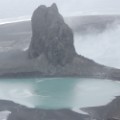
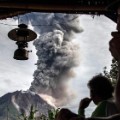
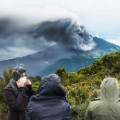
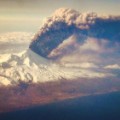
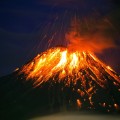
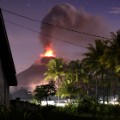
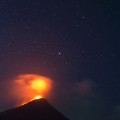
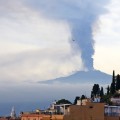
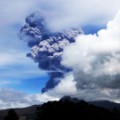
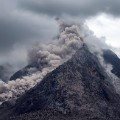
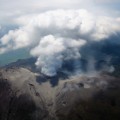
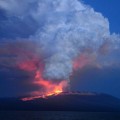
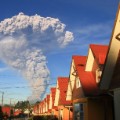
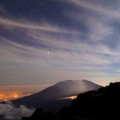
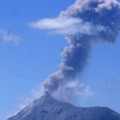
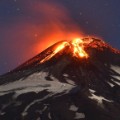








 Water and hot rocks and magma are not a good combination -- they create steam, and steam causes explosions. Such explosions can release tall clouds of ash and toxic gas and throw rocks -- so called "ballistic blocks" -- as far as eight football field lengths.This concern led to the latest warning from the Hawaii Volcano Observatory about the risk of explosions at the summit.It's happened before. In April and May of 1924, the lava lake filling Halema'uma'u crater drained. The draining followed an intense sequence of earthquakes, suggesting that the magma was moving away from the summit reservoir. Once the lake fell below the height of the local water table, steam-driven explosions began.Photographs from that time show the ash cloud rising miles into the sky. In fact, it was tall enough to reach the jet stream, which propelled the ash more than 10 miles away from the crater. The Hawaii Volcano Observatory website has a wonderful summary of the 1924 explosions, including magnificent historic photos.Rocks thrown up by a steam explosion are a big hazard. Some weigh as much as 8 tons! (That's about 4 pickup trucks). Back in 1924, one person was hit and killed by a ballistic rock. Even the superintendent of the park at the time, Thomas Boles, was injured as he tried to escape one of these lava bombs.In addition to rocks, ash is very hazardous to human health, as it can be a serious irritant to the eyes, skin, and the respiratory system.Therefore, in the coming weeks it will be critical to follow the updates from the USGS and Civil Defense regarding the status of Kilauea, not only at the lava flow field down at Leilani Estates, but also at the summit. Once again, nature has provided us with a demonstration of its forces. We should seize this opportunity to learn from it as much as we can, together.
Water and hot rocks and magma are not a good combination -- they create steam, and steam causes explosions. Such explosions can release tall clouds of ash and toxic gas and throw rocks -- so called "ballistic blocks" -- as far as eight football field lengths.This concern led to the latest warning from the Hawaii Volcano Observatory about the risk of explosions at the summit.It's happened before. In April and May of 1924, the lava lake filling Halema'uma'u crater drained. The draining followed an intense sequence of earthquakes, suggesting that the magma was moving away from the summit reservoir. Once the lake fell below the height of the local water table, steam-driven explosions began.Photographs from that time show the ash cloud rising miles into the sky. In fact, it was tall enough to reach the jet stream, which propelled the ash more than 10 miles away from the crater. The Hawaii Volcano Observatory website has a wonderful summary of the 1924 explosions, including magnificent historic photos.Rocks thrown up by a steam explosion are a big hazard. Some weigh as much as 8 tons! (That's about 4 pickup trucks). Back in 1924, one person was hit and killed by a ballistic rock. Even the superintendent of the park at the time, Thomas Boles, was injured as he tried to escape one of these lava bombs.In addition to rocks, ash is very hazardous to human health, as it can be a serious irritant to the eyes, skin, and the respiratory system.Therefore, in the coming weeks it will be critical to follow the updates from the USGS and Civil Defense regarding the status of Kilauea, not only at the lava flow field down at Leilani Estates, but also at the summit. Once again, nature has provided us with a demonstration of its forces. We should seize this opportunity to learn from it as much as we can, together.
To the best of my ability I write about my experience of the Universe Past, Present and Future
Top 10 Posts This Month
- Rosamund Pike: Star of New Amazon Prime Series "Wheel of Time"
- Belize Barrier Reef coral reef system
- SNAP rulings ease shutdown pressure as Thune rebuffs Trump call to end filibuster
- Pacific Ocean from Encyclopedia Britannica
- Flame (the Giant Pacific Octopus) whose species began here on earth before they were taken to another planet by humans in our near future
- Learning to live with Furosemide in relation to Edema
- I put "Blue Sphere" into the search engine for my site and this is what came up.
- Nine dead, dozens injured in crowd surge at Hindu temple in southern India
- Siege of Yorktown 1781
- Transgender members of the Air Force sue government over losing retirement pay
Subscribe to:
Post Comments (Atom)
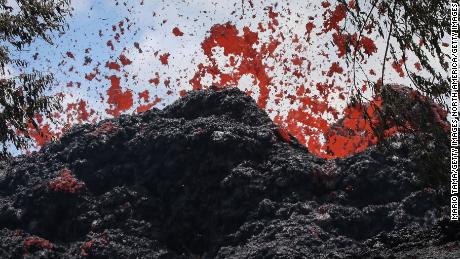

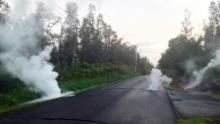

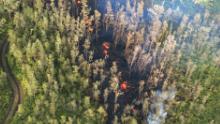

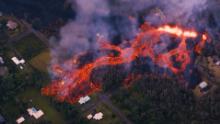
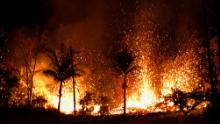
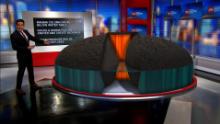
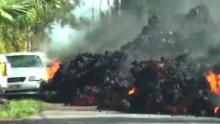
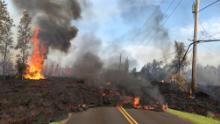


















































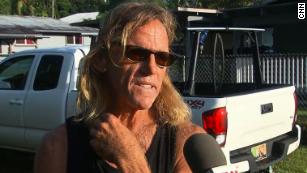
No comments:
Post a Comment